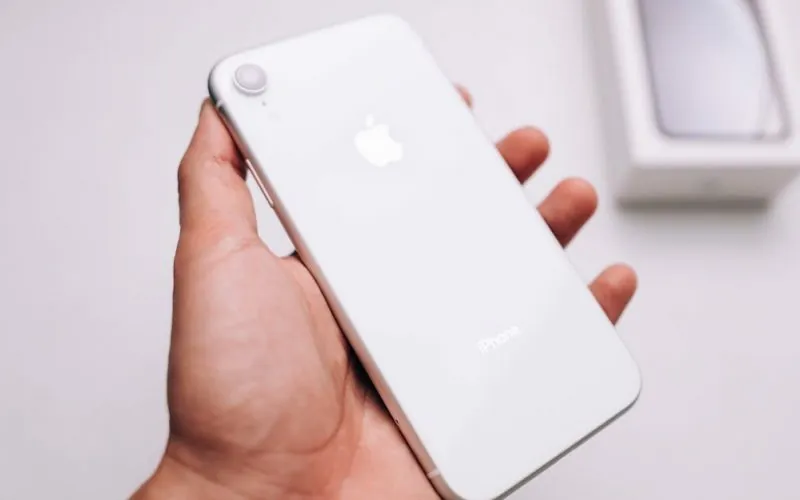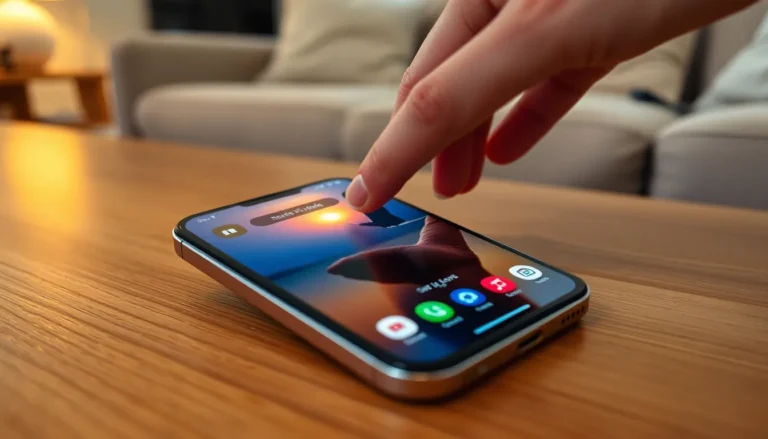Table of Contents
ToggleWhen your iPhone 13 takes a tumble and ends up with a cracked back, it can feel like the end of the world—or at least the end of your social media game. But fear not! Replacing that shattered glass doesn’t have to break the bank or your spirit. In fact, knowing the cost can help you make a smart decision without resorting to duct tape and wishful thinking.
So how much does it really cost to replace the back of an iPhone 13? The answer might surprise you. Whether you’re considering a DIY fix or heading to a professional, understanding the potential expenses is crucial. Let’s dive into the nitty-gritty and help you get that sleek device back to its former glory, without losing your sense of humor—or your hard-earned cash.
Overview of iPhone 13 Back Replacement
Replacing the back of an iPhone 13 can smooth out those cracked surfaces and enhance the phone’s appearance. Costs for replacements vary based on whether users choose DIY methods or professional services. A DIY replacement typically ranges from $30 to $80 for parts, while professionals usually charge between $150 and $300.
Materials used for replacement play a crucial role in determining the cost. Standard glass materials are often cheaper, but using high-quality options may increase expenses. Prices for the required tools add to the total DIY cost, generally around $20 to $50.
Time commitment is another factor. DIY repairs may take about one to two hours, whereas professionals tend to complete replacements within 30 to 90 minutes, depending on their workload.
With respect to warranty implications, replacing the back can void Apple’s warranty if done incorrectly. Users should weigh this risk when considering DIY repairs.
Researching reputable repair services can lead to safer and more reliable fixes. Customer reviews, warranty, and guarantee options should factor into the selection process. Users looking for the best value might opt for repair shops specializing in iPhone repairs, as these often offer competitive pricing compared to unauthorized service providers.
Establishing the right repair strategy involves balancing cost, convenience, and quality. Data indicates that many users find professional repairs less stressful and time-consuming, even at a higher price point.
Factors Affecting Replacement Cost
Several factors influence the cost of replacing the back of an iPhone 13. Understanding these factors helps users make informed decisions about repairs.
Type of Damage
Cracks and shattered glass significantly affect repair costs. For instance, extensive damage may require replacing additional components, increasing total expenses. Minor scratches may only necessitate a glass back replacement, while more extensive damage could involve deeper internal repairs. Users should assess the extent of the damage before choosing their repair option.
Cost of Parts
Parts’ quality directly impacts replacement pricing. Generic parts for an iPhone 13 typically range from $30 to $80 while high-quality OEM parts can cost between $100 and $150. Users selecting high-quality options often benefit from increased durability. Price varies depending on retailers, where specialized repair shops may charge higher for guaranteed parts. This variability is crucial for budgeting accurately.
Labor Costs
Labor plays a significant role in overall repair expenses. Professional repair services commonly charge between $50 to $200 for labor, depending on location and facility. Timeframes also differ; technicians usually complete repairs within 30 to 90 minutes. DIY repairs eliminate labor fees but may lead to potential pitfalls for users unfamiliar with the process. Weighing DIY versus professional help helps users make financially sound choices.
DIY vs. Professional Replacement
Choosing between DIY and professional help for an iPhone 13 back replacement presents distinct advantages and challenges. Understanding these factors helps users decide the best approach for their situation.
Pros and Cons of DIY
Several benefits accompany a DIY repair. Cost savings represent a significant advantage, as parts typically range from $30 to $80. Time investment often equals one to two hours, making it more versatile for those who prefer working at their own pace. However, risks exist, too. Without proper skills, users might accidentally cause additional damage. Voiding Apple’s warranty remains a concern if repairs aren’t conducted correctly. Overall, weighing these pros and cons informs decision-making regarding DIY repairs.
When to Choose Professional Help
Opting for professional assistance provides various benefits. Speed often determines the choice, as professionals complete repairs within 30 to 90 minutes. Skilled technicians handle replacements effectively, reducing the risk of further complications. Many professionals guarantee their work, offering peace of mind if issues arise post-repair. However, costs differ significantly, with professional services generally ranging from $150 to $300. Individuals facing complex damage or those uncomfortable with technical tasks should prioritize professional repairs for the best results.
Warranty and Insurance Considerations
Understanding warranty implications is crucial when considering an iPhone 13 back replacement. Performing a DIY repair can void Apple’s warranty, even if the device had been covered previously. Some users prioritize maintaining their warranty and opt for professional services, thus ensuring that repair quality meets Apple’s standards.
Insurance coverage often plays a role in repair decisions. Certain insurance plans and warranties may cover accidental damage, including cracked screens. Contacting the insurance provider can clarify if a deductible applies and what it covers.
Professional repair services typically offer a guarantee on their work, providing additional peace of mind. Many reputable repair shops provide warranties for their services, so customers feel reassured if issues arise after the repair. Investing in professional help allows users to trust the repairs are done correctly, potentially saving money on future issues.
Evaluating costs against potential warranty loss highlights another factor. Repairing through unauthorized services can lead to future complications, potentially resulting in higher expenses down the road. Users often find the costs associated with maintaining warranties outweigh the immediate savings of DIY repairs.
When assessing insurance claims for repairs, proper documentation is critical. Users should keep receipts and detailed records of the original damage and all repair processes. Some providers may require these documents to process a claim efficiently.
Weighing these factors can lead to a more informed decision about replacing an iPhone 13 back. Many find that balancing repair costs, warranty implications, and insurance coverage ultimately directs their choice between DIY and professional services.
Replacing the back of an iPhone 13 doesn’t have to be a daunting task. By understanding the costs associated with both DIY and professional repairs, users can make informed choices that suit their budget and needs. Weighing the pros and cons of each option is crucial, especially when considering potential warranty implications and the quality of materials used.
Whether opting for a DIY approach or seeking professional help, it’s essential to prioritize quality and reliability. With the right information, users can restore their devices effectively while minimizing financial strain and ensuring long-term satisfaction. Making a decision that balances cost, convenience, and quality will lead to a successful repair experience.





